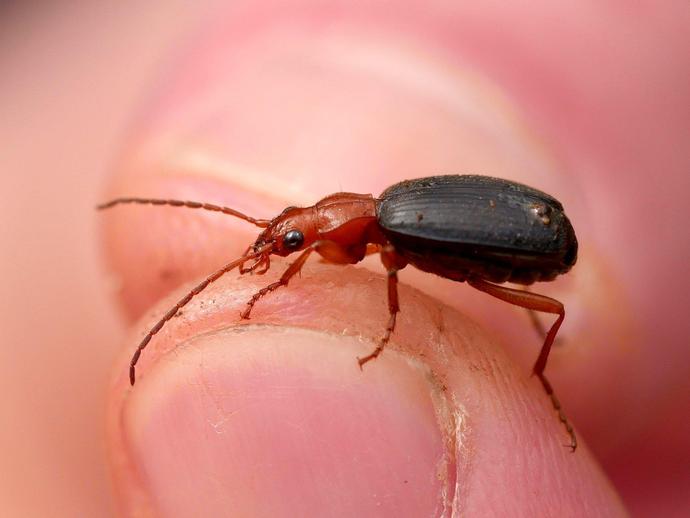April 2, 2021
It's time for today's edition of #BenInNature presented by our friends at Carter Bank & Trust!
Here's a cool beetle to close out the week: a bombardier beetle, most likely Brachinus americanus!
At first glance, this beetle may not look like anything special. Looks can be deceiving, however, as bombardier beetles have one of the most remarkable chemical defenses in the animal kingdom! When threatened, they can spray a near-boiling chemical solution from the tip of the abdomen with enough power to incapacitate or even kill an attacking insect! Kind of reminds me of a friend of mine...
How does this work? These remarkable beetles have evolved to have two chambers inside the abdomen. One contains hydrogen peroxide, and the other contains an organic compound called hydroquinone. When the beetle feels threatened, it releases these two compounds into a third chamber called the "vestibule" and a complicated chemical reaction takes place (or at least it seems complicated to me, I was never any good at chemistry). The reaction is exothermic, meaning it releases energy into the surroundings, in this case in the form of heat. The mixture nearly reaches the boiling point and about a fifth of the liquid content quickly vaporizes, causing an intense pressure build-up, at which point the liquids and gasses are rapidly expelled through an outlet valve in the beetle's abdomen with enough force to cause an audible "popping" noise!
This reaction takes just a fraction of a second, and in addition to hearing the "pop", you can even see the little puff of chemicals as they're expelled from the beetle's posterior! The chemicals the beetle releases are powerful enough to irritate the eyes and respiratory systems of vertebrate predators, and can kill many insect predators.
Thank you to VMNH Research Associate Curt Harden for assisting with this ID!
ABOUT #BenInNature
Social distancing can be difficult, but it presents a great opportunity to become reacquainted with nature. In this series of posts, Administrator of Science Ben Williams ventures outdoors to record a snapshot of the unique sights that can be found in the natural world. New updates are posted Monday - Friday, with previous posts highlighted on the weekends. This series of posts is made possible thanks to the support of VMNH Corporate Partner Carter Bank & Trust (www.cbtcares.com)
NATURE PHOTO IDENTIFICATIONS
If you discover something in nature that you would like help identifying, be sure to message us right here on Facebook with a picture (please include location and date of picture) and we'll have our experts help you identify it!

 Hours & Admissions
Hours & Admissions Directions
Directions

